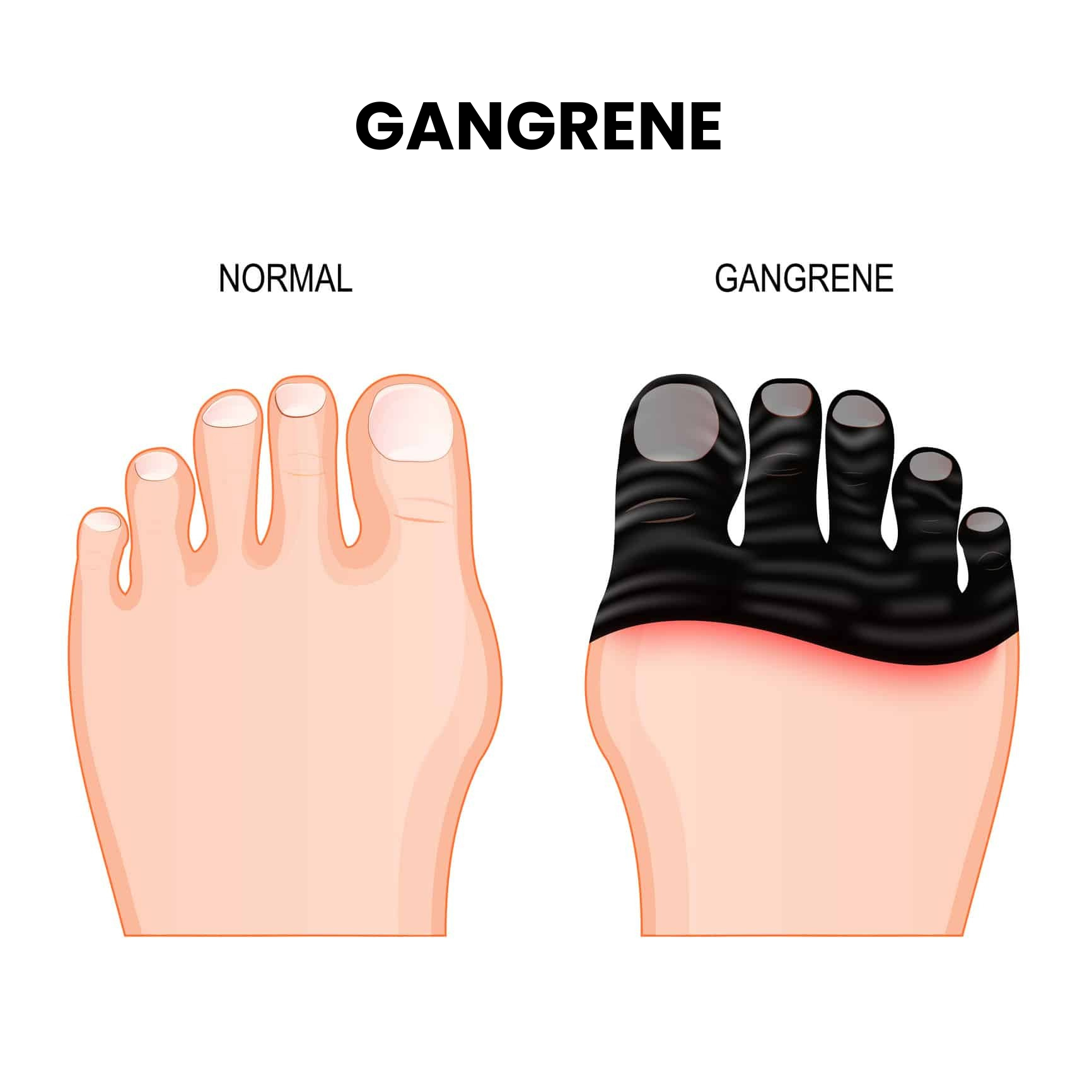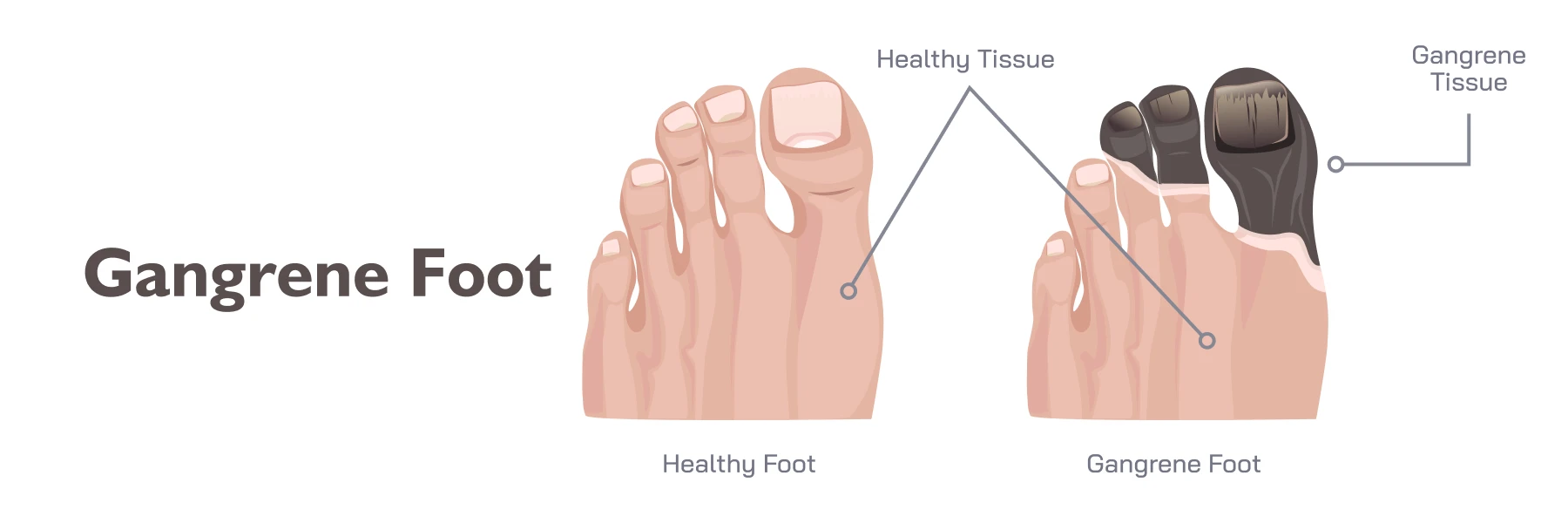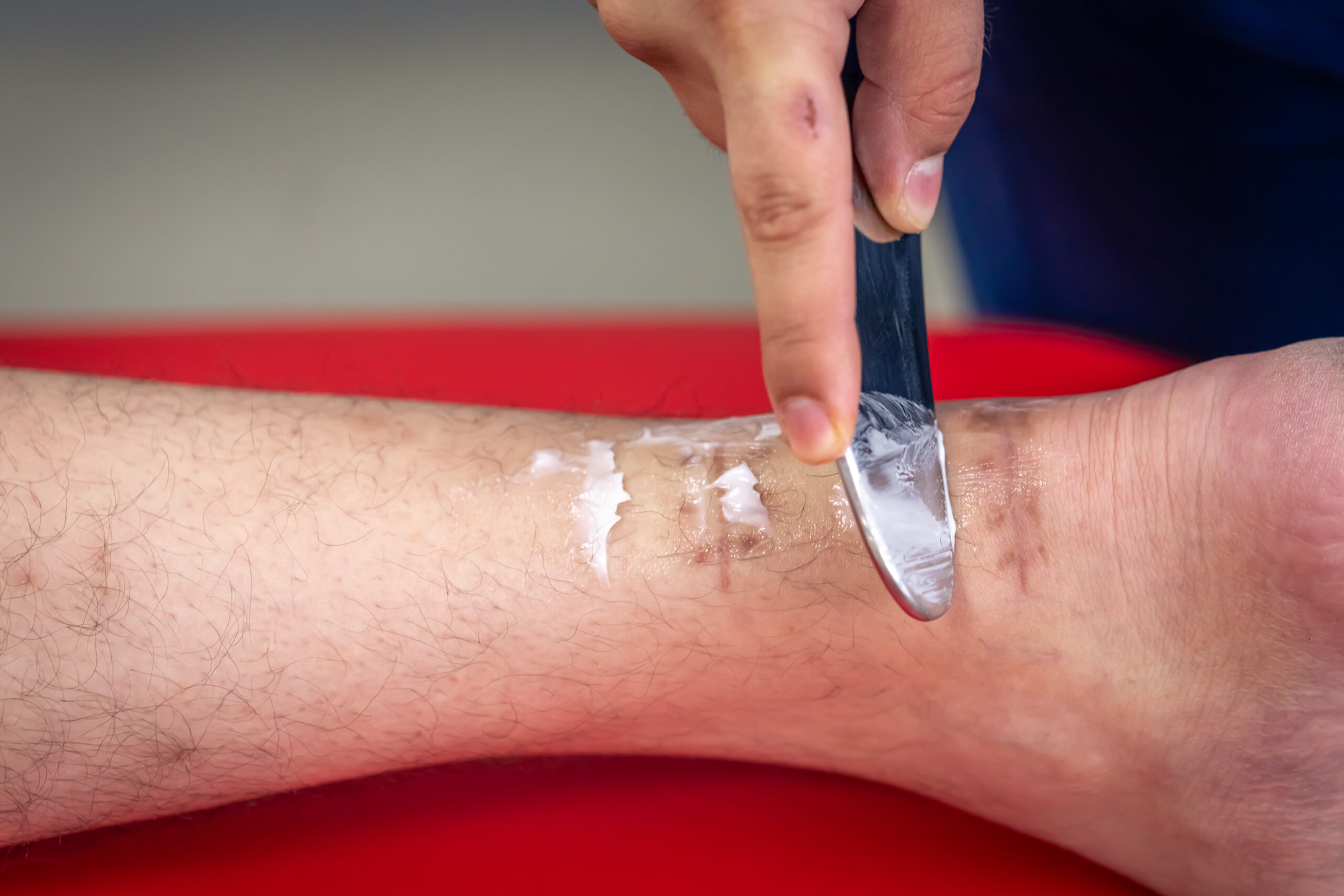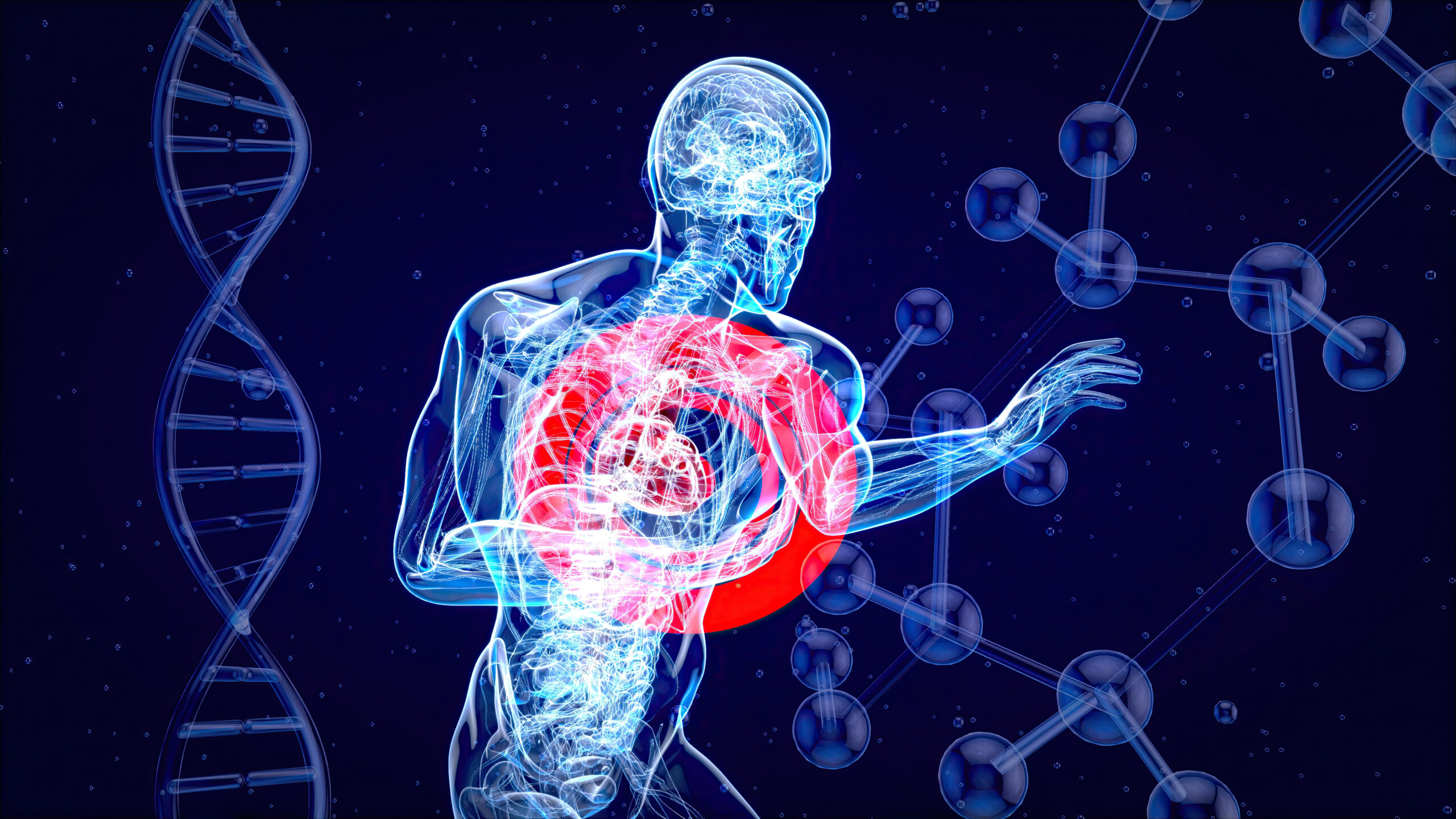Gangrene: Causes, Symptoms, ICD-10 Codes, and Expert Treatment in Ludhiana

Gangrene is a life-threatening disorder wherein the body tissues are killed as a result of a lack of blood or a severe infection. It may spread on the skin and muscles and even internal organs. . It occurs more often in diabetic persons with vascular disease or in those who sustained deep-seated injury. Failure to obtain care on a timely basis can lead to the injury growing very quickly and at times cause life-threatening complications including sepsis or amputation. This is why timely consultation with a doctor specialised in gangrene is one of the key factors in maintaining health and mobility.
Dr Luv Luthra, a highly qualified vascular and endovascular surgery specialist, has a list of patients who consult him in Ludhiana to treat gangrene. He is a seasoned professional with years of experience, extensive training and a patient-centred care approach which can offer effective solutions to complex cases of diabetic foot, peripheral vascular diseases and gangrene.
Understanding Gangrene
Gangrene is the death of tissue that cannot be reversed due to either lack of blood or an aggressive infection. The area may become black, green or purple, and it normally gives off a very bad smell unless it is treated. Although it can develop in any body part, it is more common in the toes, fingers and feet. Tissue death makes it hard to recover unless attended to by a doctor, so the sooner a patient visits a gangrene specialist, the better.
Is Gangrene Contagious?
The question that patients usually raise is: is gangrene contagious? The answer is simple–no, itself, there is no way that gangrene can be passed on to another person. However, in bacteria such as Clostridium perfringens, the infection in the infected tissue can spread extremely rapidly inside the body. In this instance, early diagnosis is very important. The way to explain this is using the example of a wound that develops pus, a foul smell, or sudden swelling; then a quick intervention is necessary. It is natural to ask: is gangrene contagious? But to realise that the hazard is internal, not person-to-person, is the point.
Types of Gangrene
It can appear in different forms, and recognising the type helps doctors decide on the right treatment:
- Dry Gangrene: This normally occurs due to decreased blood supply. The affected portion slowly delaminates, turns dark and shrivels.
- Wet Gangrene: This occurs due to infection, and usually results in blisters, swelling, and discharge of fluid.
- Gas Gangrene: A very severe and spreading condition developed as a result of bacteria that produce toxins and gas bubbles in the tissue.
- Internal Gangrene: This is more severe and less common, and it develops in organs such as bowel or gall bladder.
Gangrene Caused by Diabetes
The most outstanding risk factor is diabetes among all the risk factors. High blood sugar kills blood vessels and nerves and reduces the supply of blood to the legs. Loss of sensation may cause smaller tears or sores to be missed. Such injuries could worsen and lead to gangrene caused by diabetes. In fact, most cases of diabetic foot complications that require surgery are caused by poor wound care or untreated wounds. Check-ups, normal sugar levels and good footwear reduce the risks by a significant margin.
Recognising the Early Stages
Spotting gangrenous foot early stages can make a huge difference in treatment. Some early warning signs include:
- Persistent swelling or pain in the toes and feet
- Discolouration that turns skin red, purple, or eventually black
- Foul-smelling fluid or pus from wounds
- Numbness or a complete loss of sensation in the foot
If any of these appear, immediate consultation with a specialist is crucial. Detecting gangrenous foot in early stages may save the affected limb and prevent further complications.
Gangrene ICD-10Codes
Correct medical documentation is also important in accurate diagnosis. The gangrene ICD-10system has standardised codes that are used by doctors and hospitals around the world. These codes aid in keeping records and insurance claims as well as treatment planning.
- Gangrenous foot ICD-10– I96
- Right foot gangrene ICD 10 – I96 (with right-side details)
- Left foot gangrene ICD 10 – I96 (with left-side details)
Using the correct gangrene ICD–10code ensures treatment is clearly documented. A trained gangrene specialist makes sure that both clinical care and paperwork are handled correctly.
Why Early Treatment is Important
Postponing medical treatment enables the spread of gangrene in a short period of time. In extreme cases the infection can spread to the bloodstream and lead to sepsis, and this could be fatal. The advantages of timely intervention under the care of a specialist doctor include:
- Inhibits further death of tissue.
- Minimises the chances of amputation.
- Enhances general chances of recovery.
- Helps treat associated disorders, like vascular disease or diabetes.
Treatment Options Available
The treatment varies with the type and severity of gangrene. Some of the common techniques are:
- Antibiotics: They are given in case of infection.
- Debridement: The removal of dead tissue surgically to prevent further disease progression.
- Revascularisation procedures: An operation to open up blocked arteries with blood.
- Hyperbaric oxygen therapy: Specialised treatment which enhances the supply of oxygen to the affected tissues.
- Amputation: In severe cases, the disease can be so troublesome that it is necessary to remove the diseased part to save the life of the patient.
Dr Luv Luthra uses a mixture of these techniques, and the choice of the technique is determined by the condition of the patient, and both the life and the limb are saved.
Gangrenous Foot ICD-10in Clinical Use
The gangrenous foot ICD–10classification is especially useful for diabetic patients where accurate monitoring is required. For example:
- Right foot gangrene ICD–10ensures clarity when the right side is affected.
- Left foot gangrene ICD–10keeps records accurate for left-side involvement.
This coding system helps vascular surgeons, including Dr Luthra, in planning surgeries and following progress.
Why Choose Dr Luv Luthra in Ludhiana?
Dr Luv Luthra is a vascular and endovascular pioneer. He holds MBBS and MS degrees in general surgery, an MCh in vascular and endovascular surgery and a DNB in peripheral vascular surgery. He currently works as Chief Consultant in Global Heart and Multispecialty Hospital, Ludhiana, and also as Director of Chand Vascular Centre and Diabetic Foot Clinic.
He is a specialist physician and hence whatever his patients receive will always be based on the latest evidence and up to date, whether it is basic wound care or surgery involving vascularity. His medical skills have aided many individuals with diabetic and peripheral artery conditionsto survive, due to gangrene.
Preventing Gangrene
Even though medical science has come far in treating gangrene, prevention is the best way to deal with it. Some of the things you can do include:
- Controlling the level of sugar in the blood in the case of diabetes.
- Trying to avoid smoking, which makes blood flow limited.
- Wearing comfortable shoes to avoid cuts and blisters.
- Correct wound care and hygiene.
- Setting up frequent foot examinations when you have poor circulation.
These are habits and maintaining contact with a specialist that has expertise in the area of gangrene can help to minimize the possibility of you contracting the life-threatening disease.
Final Thoughts
Gangrene–a thing one can not pass over. Although it is not contagious among employees, it quickly propagates in the organism. Poor circulation, infection or diabetes may lead to gangrene, early consultation is important. With the right diagnosis using the correct ICD 10 codes, gangrene foot ICD 10 code the doctor can plan how to address the same.
And under the leadership of skilled doctors such as Dr Luv Luthra, the people of Ludhiana and other regions will be able to receive good treatment, preserve their limbs, and reclaim their lives.
FAQs
Q1: Is it possible to heal gangrene without an operation?
Antibiotics and wound care can be helpful in a few initial cases; most patients need surgery to debride necrotic tissue.
Q2: What is the rate of spread of gangrene?
It depends on the type. Gas gangrene develops in hours, whereas dry gangrene develops slower.
Q3: Who is at the highest risk?
Individuals who have uncontrolled diabetes, smokers, and those who have poor circulation are at the highest risk.
Q4: Is gangrene always painful?
Not always. Other patients suffer excruciating pain, and some are numb because their nerves are damaged.




